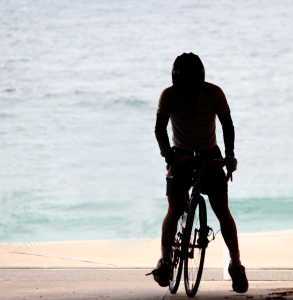Monitoring Bilateral Equivalence During Cycling
 We’ve already talked about the range-of-motion and running exercises used to monitor bilateral deficiencies with RPM2, and now we’d like to introduce you to our cycling analysis. The objective data provided by our state-of-the-art product during four different cycling tests offer you and your trainer valuable information regarding bilateral pressure on the pedals and whether your feet are in the correct position when cycling.
We’ve already talked about the range-of-motion and running exercises used to monitor bilateral deficiencies with RPM2, and now we’d like to introduce you to our cycling analysis. The objective data provided by our state-of-the-art product during four different cycling tests offer you and your trainer valuable information regarding bilateral pressure on the pedals and whether your feet are in the correct position when cycling.
Cycling App Tests
The RPM2 device offers four cycling options, all of which take several equally distributed measurements throughout the ride to determine if your cadence, bilateral pressure, and power change or remain the same from start to finish.
- Distance: In this training mode, you choose a ride lasting from 30 minutes to 6 hours, and five separate measurements are taken.
- Time Trial: This mode allows you to choose rides lasting 20, 30, 45, or 60 minutes. For each option, three measurements are taken at the beginning, middle, and end of the ride.
- Interval Training: Five ride options are available in this mode, ranging between 1 and 30 minutes. Depending on the ride’s length, one to three measurements are taken.
- Sprint Training: Offering several ride options of 10, 20, or 30 seconds each, this training mode takes one measurement during each ride.
Interpreting the Data
After completing your distance, time trial, interval training, or sprint training exercise, your dashboard will present three levels of reports. On level one, you’ll see a series of yellow foot icons. Clicking on these will take you to your crank dashboard at level two. This view shows two bar graphs (one pertaining to each foot) at a dozen points on the crank, which allows you to see how your foot pressure on both sides may change at different points in the rotation. In this view, you can also see your cadence and power numbers. If you click on any of the 12 points in the crank, you’ll be taken to level three, which shows the bilateral pressure used at that point. This can tell you if one leg is doing more work than the other. Pressure pie graphs on the four quadrants of the feet will additionally show if you are placing your feet square on the pedal, or if you are pronating or supinating them.
To learn more about using our products to detect bilateral deficiencies when cycling, visit our RPM2 Device How-To’s page. We also welcome you to visit our secure online store to browse our selection of cutting-edge footbed systems.
Comments (0)
Write a comment
Rating: Bad Good
Enter the code in the box below: